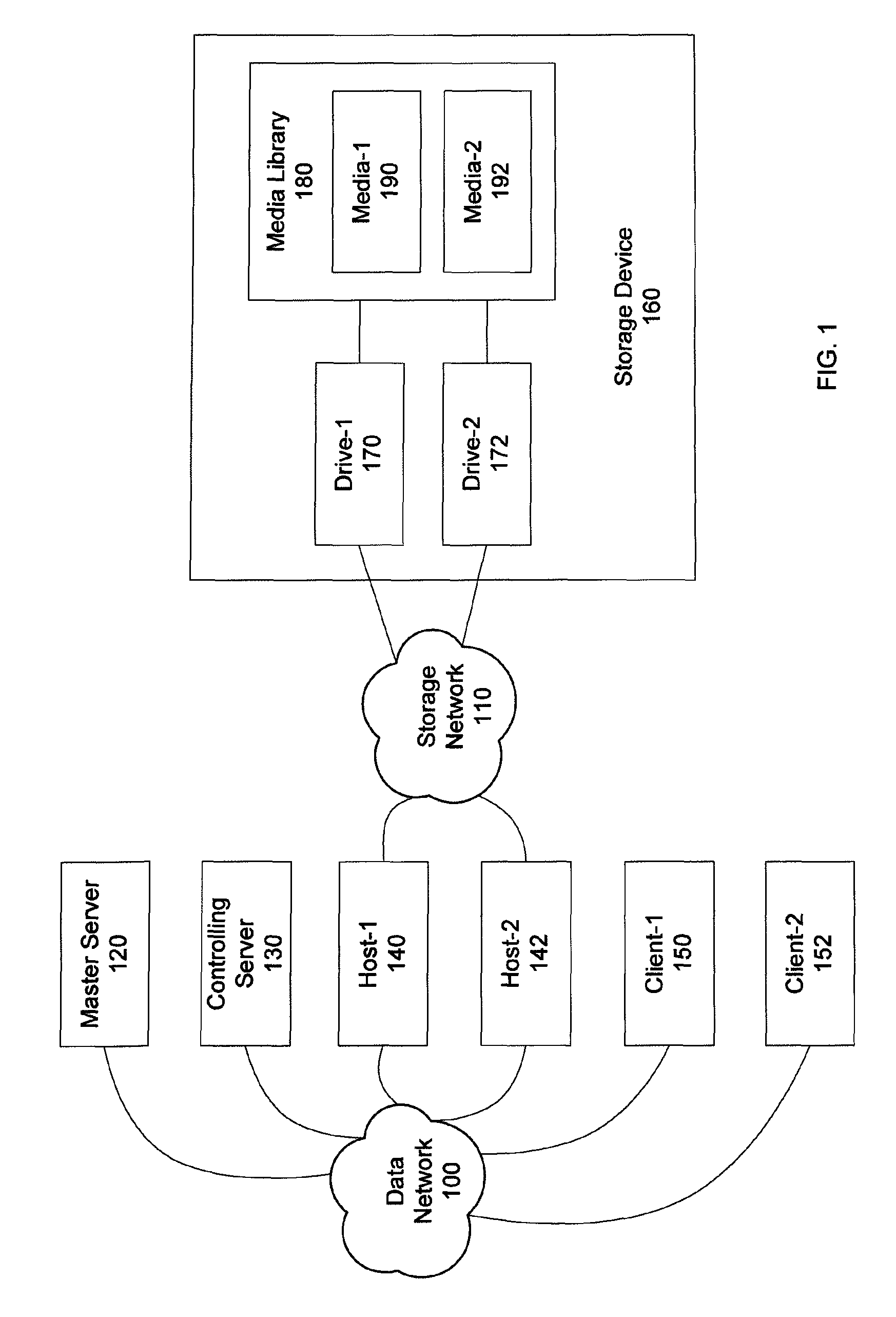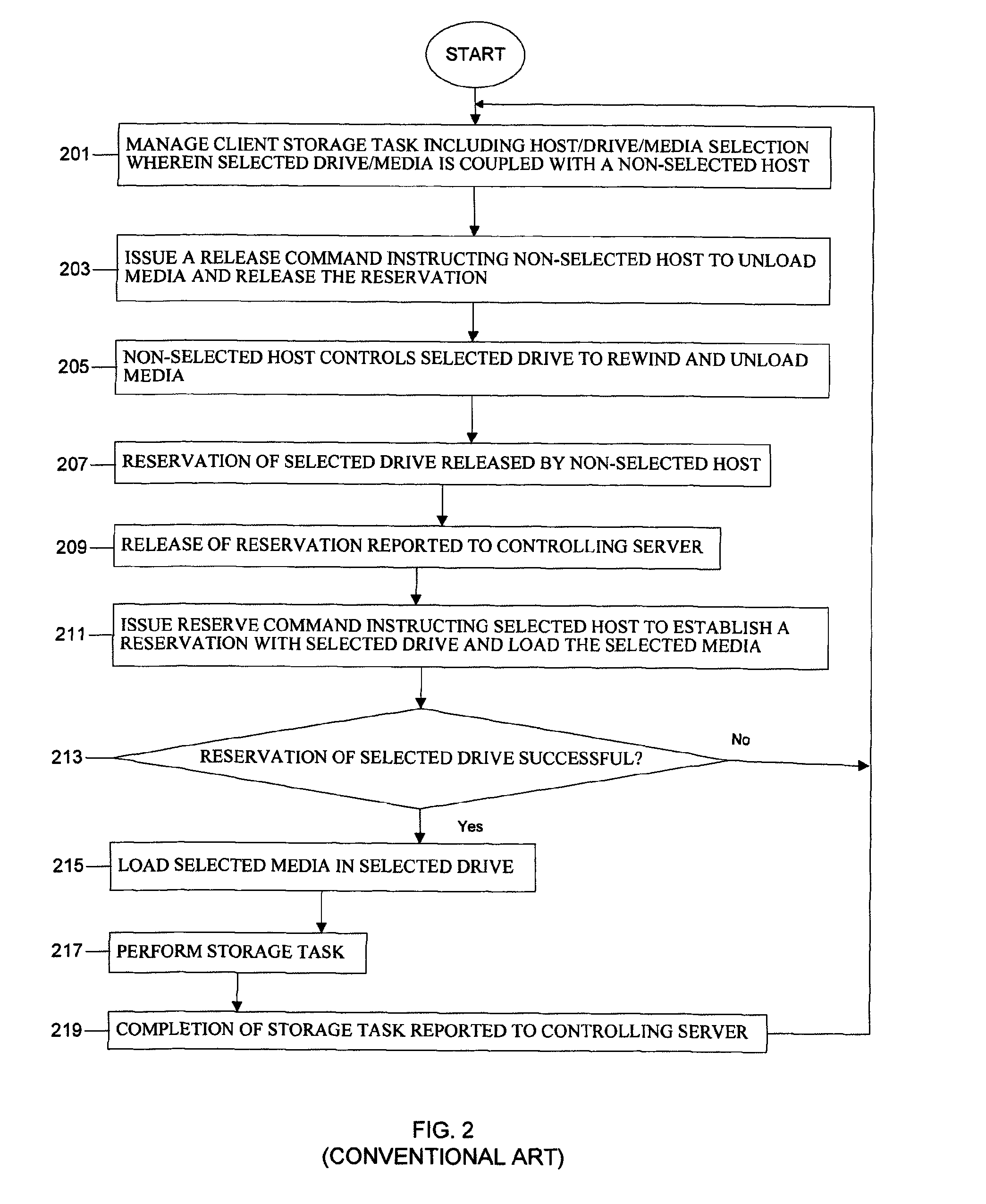Techniques for host to host transfer of sequential media and use of persistent reservation to protect media during host to host transfer
a technology of host to host transfer and sequential media, applied in the field of data storage, can solve the problems of inability to protect unauthorized memory use, and inability to transfer sequential media, etc., and achieve the effect of avoiding data loss, avoiding data loss, and avoiding data loss
- Summary
- Abstract
- Description
- Claims
- Application Information
AI Technical Summary
Problems solved by technology
Method used
Image
Examples
Embodiment Construction
[0046]FIG. 1 is a schematic block diagram of an exemplary network environment implementing a sequential media network data storage device. Data Network 100 facilitates communications between various networks nodes such as servers, hosts, clients, network caches, switches or the like. Network 100 may comprise a Local Area Network (LAN), Wide Area Network (WAN), Virtual Private Network (VPN), or any combination thereof. Additionally, any other type of network that enables communication between the network nodes and / or other nodes or gateways may be used or included.
[0047]As illustrated in FIG. 1, Data Network 100 interconnects Master Server 120, Controlling Server 130, Host-1140, Host-2142, Client-1150 and Client-2152. Further, Drive-1 (D-1) 170 and Drive-2 (D-2) are interconnected to Host-1140 and Host-2142 via Storage Network 110. Storage Network 110 may comprise a Storage Area Network (SAN), iSCSI, Parallel SCSI, Fiber Channel or any other appropriate storage network. Additionally,...
PUM
 Login to View More
Login to View More Abstract
Description
Claims
Application Information
 Login to View More
Login to View More - R&D
- Intellectual Property
- Life Sciences
- Materials
- Tech Scout
- Unparalleled Data Quality
- Higher Quality Content
- 60% Fewer Hallucinations
Browse by: Latest US Patents, China's latest patents, Technical Efficacy Thesaurus, Application Domain, Technology Topic, Popular Technical Reports.
© 2025 PatSnap. All rights reserved.Legal|Privacy policy|Modern Slavery Act Transparency Statement|Sitemap|About US| Contact US: help@patsnap.com



